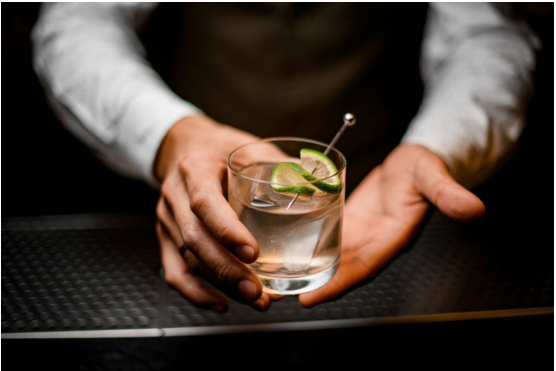
Homemade Gin Recipe: Crafting Your Own Personalized Gin at Home
Are you a gin enthusiast looking to take your love for the spirit to the next level? Or maybe you’re just curious about how to create your own personalized gin at home? Whatever your reason may be, making gin from scratch is an exciting and rewarding experience that can elevate your cocktail game to new heights.
In this article, we’ll guide you through the step-by-step process of crafting your very own Homemade gin recepie. From choosing the right botanicals to distilling and bottling, we’ll cover everything you need to know to create a unique and flavorful gin that’s tailored to your personal taste.
Introduction
Gin is a distilled spirit that’s made from a neutral base alcohol, typically grains like barley, corn, or wheat. What sets gin apart from other spirits is the addition of botanicals, which are infused during the distillation process to give the spirit its characteristic flavor and aroma.
Making gin from scratch can be a fun and creative process that allows you to experiment with different botanicals and create a personalized gin that suits your taste. Plus, with the rise of home distilling, it’s now easier than ever to make gin at home.
Understanding Gin and its Botanicals
To create a successful homemade gin recipe, it’s important to have a basic understanding of gin and its botanicals. Gin’s signature flavor comes from the use of juniper berries, which are required by law to be present in any gin recipe.
In addition to juniper berries, gin can be infused with a variety of other botanicals, including coriander, angelica root, citrus peels, and more. These botanicals are what give gin its unique flavor and aroma, and the combinations are virtually endless.
Required Equipment for Homemade Gin
Before you get started on your homemade gin recipe, you’ll need to make sure you have the right equipment. Here’s a list of the essential items you’ll need:
A pot still or reflux still
A thermometer
A hydrometer
Botanicals
Neutral base alcohol (at least 40% ABV)
Distilled water
Measuring cups and spoons
Funnel
Glass bottles or jars for storage
Selecting Botanicals for Your Gin Recipe
Choosing the right botanicals for your gin recipe is key to creating a unique and flavorful gin. Start by experimenting with different combinations of botanicals to find the flavors that work best for you.
Some popular botanicals to consider include:
Juniper berries
Coriander
Angelica root
Orris root
Citrus peels (lemon, lime, grapefruit, orange)
Cardamom
Cinnamon
Licorice root
Fennel seed
Ginger
Rosemary
Lavender
Preparing Your Botanicals
Once you’ve chosen your botanicals, you’ll need to prepare them for infusion. Start by crushing or grinding your botanicals to release their flavors and aromas. You can use a mortar and pestle, a spice grinder, or a food processor for this step.
Gin Distillation: Process and Techniques
The distillation process is what turns your botanical-infused alcohol into gin. To begin, add your botanical mixture to your pot still or reflux still, along with your neutral base alcohol.
Heat the still to a temperature of around 78°C (172°F) to start the distillation process. As the alcohol vaporizes, it will pass through the botanicals, extracting their flavors and aromas.
The first distillate, also known as the “heads,” should be discarded, as it contains unwanted impurities. The middle distillate, or the “heart,” is the high-quality gin that you’ll want to keep.
Finally, the last distillate, known as the “tails,” should also be discarded, as it contains undesirable flavors and aromas.
Filtering and Bottling Your Gin
Once you’ve distilled your gin, it’s time to filter and bottle it. Start by diluting your gin to your desired strength using distilled water. Most gins are bottled at around 40% ABV, but you can adjust this to your personal preference.
Next, filter your gin using a cheesecloth or a coffee filter to remove any remaining impurities or sediment. Finally, transfer your gin to glass bottles or jars for storage.
Aging Your Homemade Gin
While not necessary, aging your gin can help to mellow out the flavors and create a smoother, more complex gin. Simply transfer your gin to a glass container and let it age for a few weeks to a few months, tasting it periodically until you’re happy with the flavor.
Gin Tasting and Cocktail Ideas
Once you’ve created your homemade gin, it’s time to taste and enjoy it! Try sipping your gin neat to fully appreciate its flavor and aroma. Alternatively, mix up a classic gin and tonic or try experimenting with different cocktail recipes.
Some popular gin cocktails include:
Gin and tonic
Negroni
Martini
Gimlet
French 75
Tom Collins
Singapore Sling
Bee’s Knees
Corpse Reviver
Conclusion
Making your own homemade gin is a fun and rewarding experience that allows you to create a unique and personalized spirit. With a little experimentation and some basic equipment, you can craft a flavorful gin that’s tailored to your personal taste.
Remember to always check your local laws before attempting to make gin at home, and enjoy your creations responsibly.
Frequently Asked Questions
Q: Is it legal to make gin at home?
A: This depends on your location. In some countries, it is legal to distill spirits for personal consumption, while in others, it is illegal. Check your local laws before attempting to make gin at home.
Q: How long does it take to make homemade gin?
A: The entire process of making homemade gin can take anywhere from a few hours to a few weeks, depending on your preferred method.
Q: Can I use a pressure cooker or Instant Pot to make gin?
A: It is not recommended to use a pressure cooker or Instant Pot for gin distillation, as these appliances are not designed for this purpose and can be dangerous.







